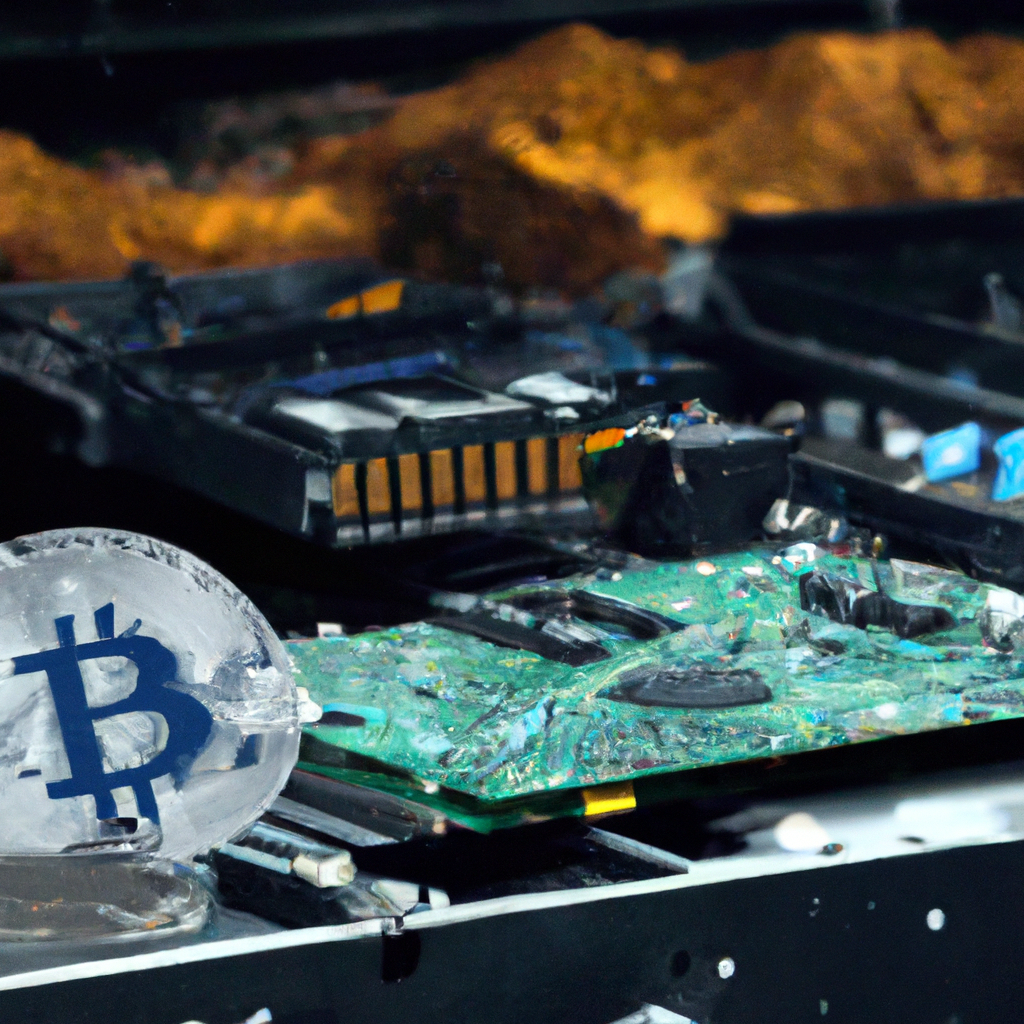Cryptocurrency mining has become increasingly popular since the launch of Bitcoin in 2009. Mining is the process of verifying transactions and adding them to the blockchain ledger. This process is essential to the operation of cryptocurrencies as it ensures that the transactions are secure and immutable. In this article, we will explore the process of cryptocurrency mining, its relation to blockchain technology, and how it differs between digital currencies such as Bitcoin mining and Ethereum mining.
Blockchain Technology

Blockchain technology is the backbone of cryptocurrencies. It is a decentralized ledger that records all transactions made on a network. Each block on the blockchain contains a unique code, called a hash, that links it to the previous block. This makes it almost impossible to alter the data on the blockchain without being detected.
The blockchain ledger is maintained by a network of nodes that validate transactions and add them to the blockchain. This is where cryptocurrency mining comes in.
Cryptocurrency Mining
Cryptocurrency mining involves solving complex mathematical problems to validate transactions and add them to the blockchain. Miners use powerful computers to solve these problems and earn rewards in the form of new cryptocurrency coins.
The first cryptocurrency to use the mining process was Bitcoin. Bitcoin mining involves solving a mathematical problem called a hash function. Miners compete to solve this problem first, and the winner is rewarded with Bitcoin. The process is highly competitive, and miners need to invest in expensive hardware to stay ahead of the competition.
Ethereum Mining
Ethereum is another popular cryptocurrency that uses mining to validate transactions. However, Ethereum mining differs from Bitcoin mining in several ways.
Ethereum uses a different hashing algorithm than Bitcoin, called Ethash. This algorithm is designed to make mining more accessible to the average person by using less specialized hardware. However, Ethereum mining still requires powerful graphics processing units (GPUs) to solve the complex mathematical problems.
Another significant difference between Bitcoin and Ethereum mining is that Ethereum has a different block time. Bitcoin has a block time of 10 minutes, while Ethereum’s block time is just 15 seconds. This means that Ethereum miners can process more transactions per second, making it a more efficient network.
The Mining Process
The mining process involves several steps.
First, miners need to download the cryptocurrency’s software and join a mining pool. Mining pools are groups of miners who combine their computing power to increase their chances of solving the mathematical problem and earning the reward.
Next, miners need to set up their hardware and start mining. The computer will solve the mathematical problem and add the transaction to the blockchain.
Finally, the miner will receive a reward in the form of new cryptocurrency coins. The amount of the reward varies depending on the cryptocurrency and the difficulty of the problem solved.
Risks and Rewards
Cryptocurrency mining can be a profitable venture, but it also comes with risks. The cost of hardware, electricity, and cooling can be high, and the competition is fierce.
There is also the risk of a 51% attack. This is when a single miner or group of miners control more than 50% of the network’s computing power. This gives them the ability to manipulate the blockchain and potentially steal cryptocurrency.
Despite the risks, cryptocurrency mining remains a popular way to earn new coins and support the network. It is an essential part of the blockchain ecosystem, ensuring that transactions are secure and immutable.
Conclusion
Cryptocurrency mining is the process of verifying transactions and adding them to the blockchain ledger. It is an essential part of the blockchain ecosystem, ensuring that transactions are secure and immutable. Bitcoin mining and Ethereum mining differ in several ways, including the hashing algorithm, block time, and hardware requirements. Despite the risks, cryptocurrency mining remains a popular way to earn new coins and support the network.






